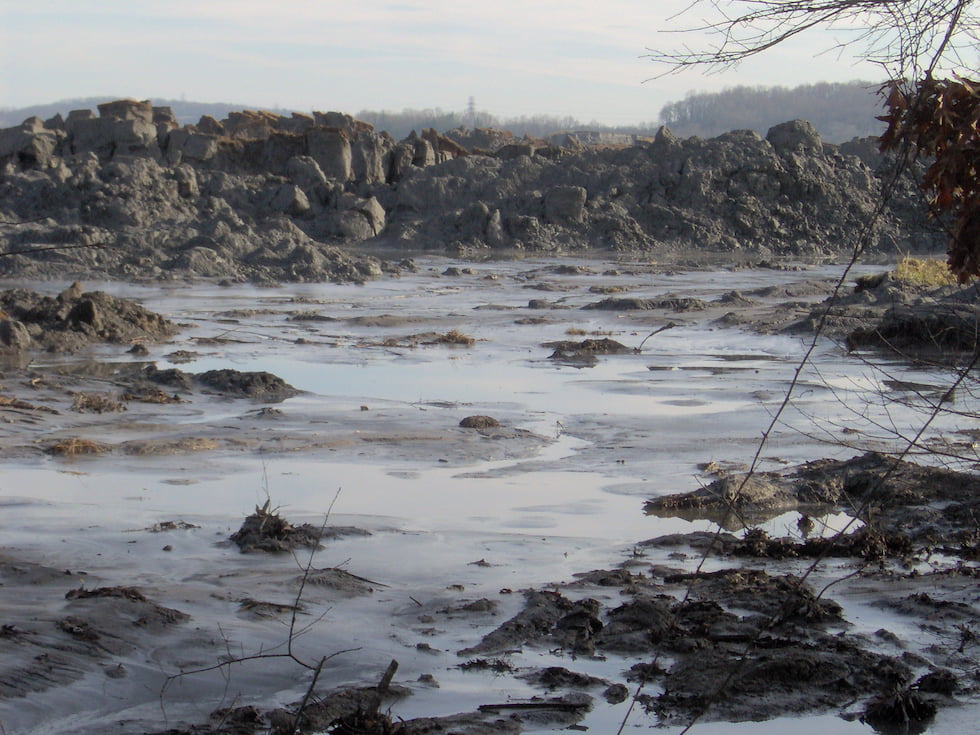
Coal-fired power plant operators and contractors face challenges in the management of coal combustion residuals (CCR) and keeping pace with the pump, containment and filtration solutions needed in remediation. With the growing pressures on CCR pond owners from environmental liability, and social, political and regulatory arenas, CCR management has become an area of increased focus for many operators.
The ash is typically stored in large manmade ponds that need to be emptied when full. Federal regulations allow two methods of dealing with ponds at the end of their life cycle: cap or excavate. Therein lies the challenge for the operator. The water must be removed and contaminates captured prior to releasing water into an aquifer.
As coal ash sits in water, it releases various metals, which can be harmful to the environment. Addressing these metals in the water presents multiple issues. For instance, one approach is filtering out the metals, but that is not usually a simple process.
There are up to 14 different metals—including arsenic, selenium, thallium and others—that are a byproduct from coal burning. There is no single media or filter that can capture all the metals. Also, not every CCR pond is the same, so the remediation plan is customized.
There are multiple other issues that operators and contractors must address, such as how to achieve successful separation of residuals into solid and liquid phrases. Coal ash is an abrasive solid that wears down equipment at an accelerated rate. There is the high cost of maintenance of rotating equipment. Any plans need to include acquisition and retention of human capital involved in these processes. There is also the disposal cost of metals and contaminates. The list of issues can be daunting.
So, operators and contractors need to decide the best way to address remediation expectations to achieve compliance safely and efficiently without incurring the expense of shutting down ponds.
Taking a Holistic Approach
A typical coal ash dewatering plan involves an operator or contractor outsourcing the components of the system from several different equipment sources, covering pumps, tanks and filtration. The multivendor approach becomes the primary option because it can be difficult to find a single company that has the equipment and expertise to be the only source.
Taking a holistic approach where one company manages the project and provides an engineered solution is another option. A good starting point in assessing companies is to look for one with hydraulic and water filtration engineering skills in-house; available transfer, treatment and containment equipment that can be locally sourced; and CCR remediation project experience.
This project experience needs to include developing and implementing strategies to reduce the amount of hazardous waste by applying various filtration applications, which can reduce the amount of waste and lower disposal costs. Project experience can also be tapped to help in equipment performance, such as how best to operate pumps and hoses to minimize the abrasive effects of coal ash to lower maintenance costs and avoid costly repairs.
Having an equipment rental provider deliver a complete turnkey solution positions the provider to preplan the deployment of an engineered solution and avoid the miscommunications that can occur when multiple companies are involved.
Working with a company experienced in all equipment areas may reduce engineering costs and avoid re-engineering costs that can be incurred when components of the system do not work together. Taking this holistic approach can considerably reduce planning and design costs, expedite installation, meet deadlines and achieve the desired result.
By going this route, operators and contractors have a single point of contact, which communicates and collects all the data from the plant and provides needed solutions.
With this intimate project and system knowledge, the provider is in position to maneuver and mitigate downtime when project parameters change. It can quickly mobilize different pumps, filter media and tanks as needed, leveraging its knowledge of the water volume being processed and chemical composition of the water. This can be particularly helpful should the site experience a weather-related event like a hurricane where system changes may be needed to keep up with the flow.
Improving Project Efficiency
Two areas that are sometimes overlooked—but critical to the effectiveness and success of a CCR equipment solution—are telematics and safety training.
Pump telematics is an excellent way to keep an eye on pump performance from measuring flows and pressure through transducers. The ability to see real-time engine data can flag potential engine issues before they result in a downtime issue.
Installing tank-monitoring equipment, such as a tank level sensor or level transducer, can prevent costly overflows. Telemetry on filter vessels enables users to see when the filter vessels are being clogged. Digital tools, like worksite management solutions to track and manage telematics data, enable a project to be effectively monitored by fewer people. These tools place actionable information in a user’s hands to optimize equipment and minimize downtime. The tools make reporting a simple, digital action rather than a manual effort.
Safety training is essential to prevent people from getting injured by using the correct pump, storage and filtering procedures and safe handling of filter media.
The rental equipment provider should be able to conduct training, such as the proper way to operate and troubleshoot pumps, lockout/tagout procedures, on-site confined space training and forklift operation.
Ensuring worker and contractor credentials are matched to the requirements of each project task is another area where a provider can help plant operators by using cloud-based services to administer training records. Going digital can allow workers to tap a mobile app that is accessible anywhere. The app can provide operators and workers with access to a virtual, comprehensive competency transcript of training courses and certifications. This can help operators ensure compliance with safety regulations and company policies.

